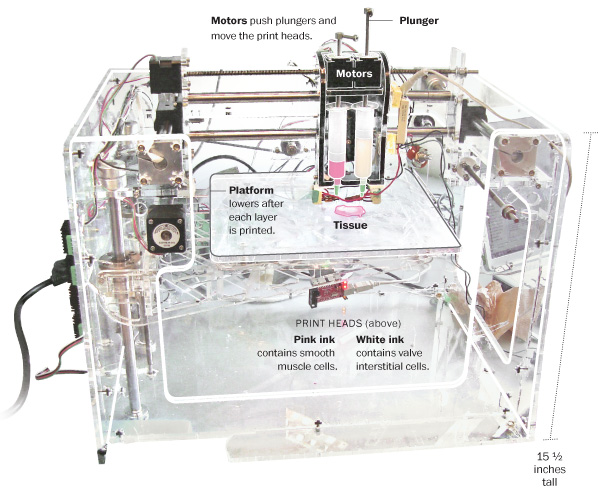Bioprinting is the Additive Manufacturing of Medical Science

Bioprinter used at Cornell University. Photo courtesy of the Washington Post.
Latest News
February 1, 2012
For many years people expected the future of medical technology would probably have something to do with cloning. Growing new organs from cells harvested from the patient would make rejection unlikely, and whole stockpiles of human parts could be created to save lives. Now it seems more likely that AM will provide the organs that social mores and certain types of paranoia combined to keep cloning on the sidelines.
A number of institutes around the world are experimenting with bioprinting. The process uses inkjet based 3D printers and an “ink” made of human cells (as with cloning, using the patient’s own cells are the best bet) mixed with a dissolvable gel, often cellulose. From there, the process is similar to other AM techniques. The printer puts down a layer, which is then cured with heat, chemicals or UV light, before moving on to the next layer. Finally, the printed part is placed in a bioreactor, where it is subjected to the processes it is meant to facilitate (blood is pumped through heart valves, liquid through a liver, etc.).
As well as ensuring transplanted organs won’t be rejected, bioprinting can help to overcome a general shortage of organ donors. As long as the patient has enough of the proper cells to be harvested, no donor is required. Even in cases where this isn’t possible, a donated organ could theoretically be used multiple times to produce a number of organs, instead of providing for a single patient.
Nor is the process limited to the creation of internal organs. Researchers at Washington State University have used bioprinting to make new bones. Doctors at University College in London designed and printed a polymer scaffold that was used for a trachea transplant. Even skin can be produced through this method, which will have a serious impact on the treatment of burn victims.
Below you’ll find a TED Talk that discusses this technology.
Subscribe to our FREE magazine, FREE email newsletters or both!
Latest News
About the Author
John NewmanJohn Newman is a Digital Engineering contributor who focuses on 3D printing. Contact him via [email protected] and read his posts on Rapid Ready Technology.
Follow DE





